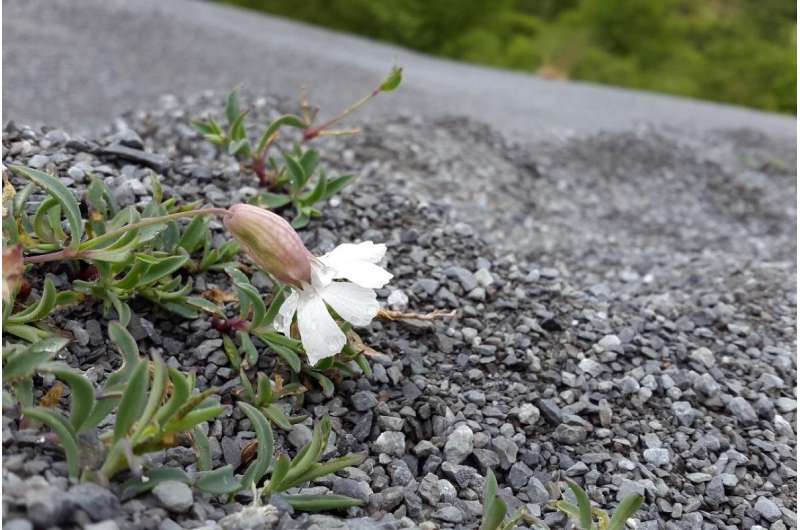Pollution-loving plants key to predicting adaptation to environmental change

Environmental change is happening so quickly that wild organisms can't keep up, and face substantial challenges. But some organisms may be able to adapt surprisingly rapidly to new circumstances. Predicting which species will be able to adapt quickly is far from straightforward, but an unassuming coastal plant may just hold the key to understanding how species adapt quickly to man-made habitats.
Industrial-era mining has left thousands of places in Great Britain and Ireland with unnaturally high levels of toxic heavy metals in the soil. This mine contamination kills most plant species and has often left barren wastelands that haven't been colonized for hundreds of years.
A team of researchers led by Bangor University have shown that a common wild flower, the sea campion (Silene uniflora) has managed to rapidly adapt to these toxic sites. This has happened not just once, but on at least three separate occasions in Wales, England and Ireland within the 250 years.
Alex Papadopulos, senior lecturer at Bangor University explained: "These plants usually grow on cliffs and shingle beaches, but mining opened up a new niche for them to fill that other plants weren't able to exploit as quickly. What's so amazing is that even though the coastal populations aren't heavy-metal tolerant, geographically isolated mine populations across Great Britain and Ireland have all managed to evolve metal tolerance in a handful of generations."
Surprisingly, genomic comparisons of mine and coastal populations showed that the shared genetic basis of adaptation is highly complex. Rather than rapid adaptation being triggered by a small number of key genes—as we've seen in parallel evolution in coronavirus—it may require small changes across large parts of the genome in macro-organisms. This makes predicting adaptation substantially more difficult.

Some species can adapt very quickly
Alex Papadopulos added: "The good news is that some species can adapt very quickly to the challenges we are throwing at them. If a species has adapted to a major challenge in one part of its range, it's highly likely that it will be able to adapt to a similar problem elsewhere—they may not even need to use the same genetic variants to be successful. The less good news is that with such complex genomic control of rapid adaptation, it makes predicting whether species can adapt purely from genetic data a much less likely prospect."
Co-author Mike Fay, senior research leader (Conservation Genetics, Royal Botanic Gardens, Kew) said: "Human impacts on the environment are a global phenomenon, and studies like this, examining how plants and other organisms respond to the resultant challenges, will be crucial in understanding how ecosystem function can be maintained in a changing world."
More information: Alexander S T Papadopulos et al, Rapid Parallel Adaptation to Anthropogenic Heavy Metal Pollution, Molecular Biology and Evolution (2021). DOI: 10.1093/molbev/msab141
Journal information: Molecular Biology and Evolution
Provided by Bangor University




















